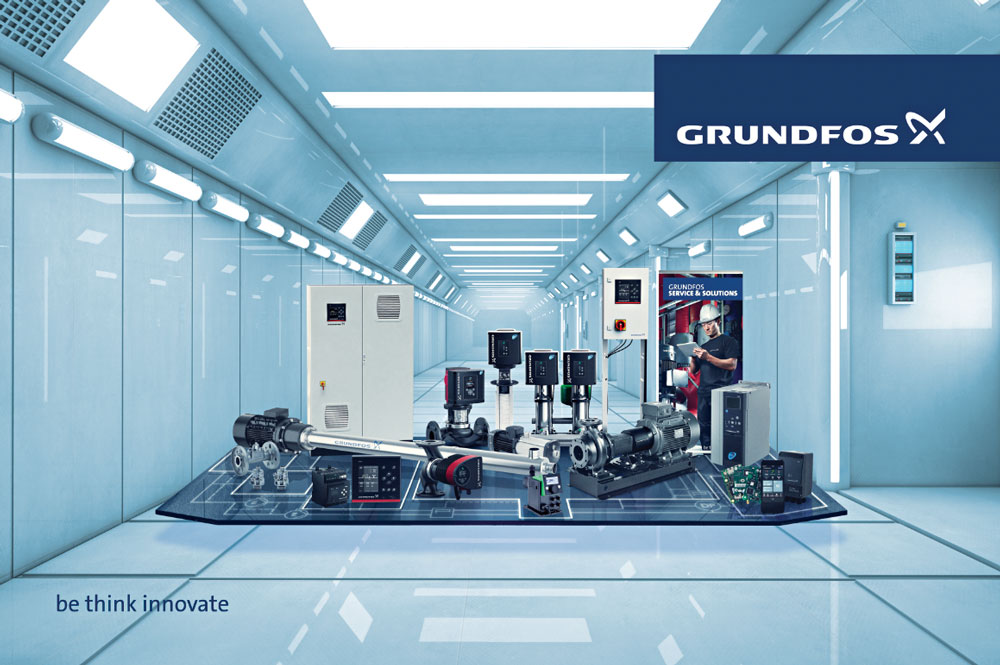The FUTURE of GREEN BUILDINGS lies in INTELLIGENT PUMPING SOLUTIONS
Today as the conversations around climate change and global warming pick up pace in our daily interactions with friends and family members, there is a growing awareness about the need to cut down on energy costs and carbon footprint. Consumers and builders are moving towards green buildings by incorporating energy-efficient infrastructure without compromising on comfort.

Today as the conversations around climate change and global warming pick up pace in our daily interactions with friends and family members, there is a growing awareness about the need to cut down on energy costs and carbon footprint.
Consumers and builders are moving towards green buildings by incorporating energy-efficient infrastructure without compromising on comfort. The recent budget announcement on setting up of Energy Service Company (ESCO) business model in large commercial buildings will enhance awareness for energy audits. This presents an opportunity for wider implementation of energy efficient and intelligent pumping solutions in commercial buildings.
Making energy efficiency a priority when it comes to pumping
Over the years with traditional pumping systems, consumers have often witnessed uneven pressure and flow rates. HVAC systems that operate on traditional pumping systems consume high energy leading to increased costs and carbon footprint.
While inefficient pumping systems drive up demand for energy consumption, builders are adopting intelligent solutions that optimize system performance of the entire building ecosystem. Intelligent pumps embedded with digital solutions like cloud connectivity and Internet of Things (IoT) ensure seamless performance that reduces complexity and increases energy efficiency resulting in low lifecycle costs.
Intelligent pumping solutions with smart sensors can be used to collect data such as indoor and outdoor temperature to provide actionable insights. These insights can even help the HVAC system to identify temperature changes on a real-time basis and make the necessary adjustments. This will ensure that energy is consumed optimally on a demand basis and that there is no waste of resources. The sensors can also provide information associated with potential downtime through their predictive maintenance capabilities to mitigate unexpected maintenance costs and improve the overall lifecycle of the HVAC system.
For green buildings with sustainable design, it is crucial to include features such as the use of silver-coated windows that reflect heat and enables optimization of natural light, leveraging smart building systems such as timers and motion sensors that cut down on energy consumption among others. Also, by incorporating a Zero Liquid Discharge (ZLD) approach, green buildings will enable improved use of resources and reduce water footprint. Building owners have reported new or renovated green buildings show an increase by seven per cent in asset value over traditional buildings.
Technologies such as Grundfos' iSOLUTIONS, can truly help in aiding this cause. This solution enables real-time monitoring, remote control, system optimization, fault prediction and preventive maintenance to achieve the highest level of performance and savings in cost, energy and resources used like water through E-pumps. For example, in Dubai, a country that experiences summer heat throughout the year, HVAC systems are usually utilized on a larger scale to combat complications brought on by the arid climate. Two towers, one residential and one commercial, were costing a property management and services company significantly high electricity costs. After conducting an Energy Check, they decided to shift to energy efficient pumps. This move helped them in reducing the power consumption from their previous setup by 46% and 57% in the two towers. Overall, these buildings reduced their total energy savings - including that from chillers, ventilation and lights - between 20-25%.
As we shift towards an era of sustainability, infrastructure for pressure boosting is also being scrutinized for its efficiency, and intelligent pressure boosting systems can spearhead this change. For instance, water boosting systems that operate on fixed speed pumps leads to increase in system pressure and loss of both water and energy. Hence, water boosting systems with Variable Frequency Drives (VFD) are built to supply water basis the need. These systems consume energy only as per demand. Furthermore, the set point available in VFD can also be changed to suit to the flow, reducing the energy loss due to resistance. Hence, builders and consumers must take solutions like VFD into consideration for green buildings to achieve significant energy savings in buildings while delivering optimal performance.
When functioning in a proportional pressure mode, commercial buildings can witness an annual energy savings up to 33%. For example, the Midea Mariott Hotel in Shunde, Chinawas incurring high electricity costs while maintaining two rooms for water boosting, catering to 258 rooms spread across 28 floors. The hotel chose Grundfos pumps which only required a single water boosting set for both hot and cold water, therefore consuming just half the energy as previous pumps for its water boosting capabilities.
Also, buildings have vastly different requirements for wastewater transfer, making it essential for builders and end consumers to rely on submersible wastewater pumps and lifting stations that are pre-assembled and ready to install, ensuring reliability, safety and efficiency.
Enabling a green future
With increasing trend of green buildings, it is imperative for regulatory/government bodies to help builders and consumers with proper policy guidelines on green infrastructure. The return on investment on green buildings is notable, both in terms of environment and economy. Green buildings will create healthier spaces for communities, providing great service to consumers and positively impacting the environment.
While building and construction industries go green, there is a strong business case for this as well - green buildings help save on costs and enable the efficient use of resources like energy and water. It is a win-win for the environment, the industry and the end-users.

- Ajit Jainath Singh
Area Sales Director, Commercial Building Services, INDO and Sub-Saharan Africa Region, Grundfos

Hits: 0







